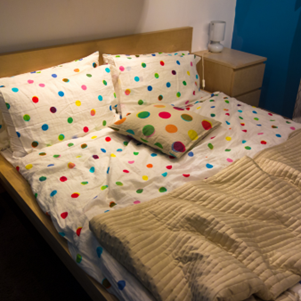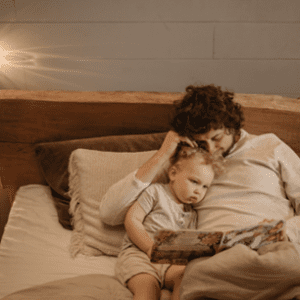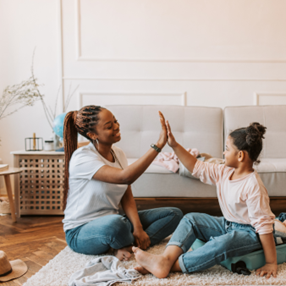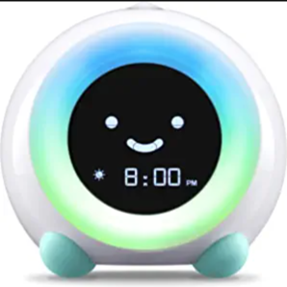If you’re a parent of young children, you’ve likely encountered many nights with too little sleep. For parents and caregivers of children with Autism Spectrum Disorder (ASD), sleep challenges can be debilitating. General estimates indicate that up to 80% of children diagnosed with ASD have sleep difficulties.
Here are 6 proven strategies to promote positive sleep behaviors:
- Bedtime should be calm, quiet, and relaxing:
The lights in the room should be dim, and no screen time should occur in the bedroom. White noise may help to drown out other sensory-related issues.

- Create a cool climate:
Consider how much clothing the child is wearing and the weight of the blankets on the bed. Some children enjoy weighted blankets. However, if they get overheated, this may impact the quality of their sleep. - Limit drinks, snacks, and rigorous activities 1-2 hours before bedtime:

Consider quiet activities, such as listening to soothing music or an audiobook through a Bluetooth speaker, taking a bath, or reading a book to your child. - Develop a consistent bedtime routine that you follow every night:

Create comforting rituals embedded into routine, such as stories and lullabies, for a positive experience and cherished memories. Children with ASD thrive in highly structured environments. Consider adding visuals, such as a visual schedule that depicts the events of the evening prior to bedtime. 5 - Use positive reinforcement:

Applied Behavior Analysis (ABA) techniques, such as positive reinforcement, can encourage your child to engage in desired sleep behaviors. For example, the child might earn rewards for going to bed at the same time every night or for avoiding electronic devices before bedtime. - Consider using a visual alarm clock:

These clever devices use colors and fun visual facial expressions to teach your kids when it’s time for bed and time to wake up. Half an hour before it’s time to wake up, the clock will glow yellow, signaling it’s almost time to start the day. When it turns green, it’s time to wake up! Visual alarm clocks also often have sleep sound options and different night light colors to soothe your child to sleep. An example of a visual alarm clock can be found here: https://www.amazon.com/LittleHippo-Childrens-Trainer-Sounds-Machine/dp/B078Z4KFDR/ref=asc_df_B078Z4KFDR/?tag=hyprod-20&linkCode=df0&hvadid=247699055514&hvpos=&hvnetw=g&hvrand=1787398284134346629&hvpone=&hvptwo=&hvqmt=&hvdev=c&hvdvcmdl=&hvlocint=&hvlocphy=9003531&hvtargid=pla-413059027579&th=1
The nighttime struggles of getting your child to sleep are often magnified when he or she has a diagnosis of Autism. These strategies can be useful tools to help your child to adapt to a predictable sleep pattern. But, you may also benefit from professional help. FUNdamental Development ABA has a team of highly experienced clinicians who can help you to develop a sleep strategy that is tailored to the specific needs of your family. Reach out to us at www.fundamental-aba.com to learn more!





